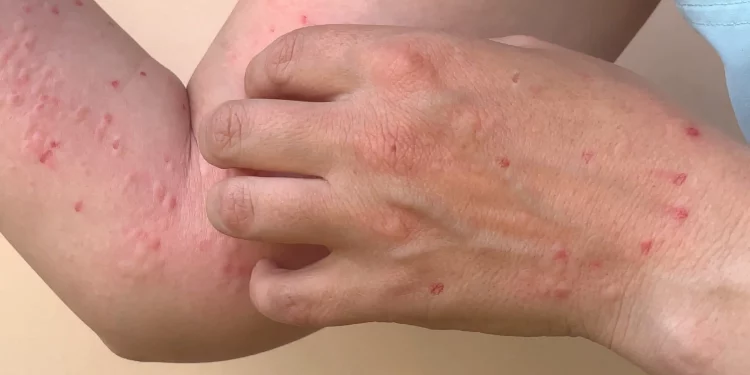The Monkeypox virus, a member of the Orthopoxvirus genus, has gained significant attention in recent years due to outbreaks outside its traditional endemic regions. Historically confined to parts of Central and West Africa, Monkeypox has now made its way into other parts of the world, sparking global concern. Understanding the virus and taking proactive measures to prevent its spread are essential to protecting public health.
What is Monkeypox?
Monkeypox is a viral zoonotic disease, meaning it can be transmitted from animals to humans. It was first identified in 1958 when outbreaks occurred in monkeys kept for research, hence the name “Monkeypox.” However, the primary reservoirs of the virus are rodents, including squirrels, rats, and dormice. Human cases were first recorded in 1970 in the Democratic Republic of the Congo, and since then, the virus has been reported in several other African countries.
The virus causes symptoms similar to those of smallpox, though generally less severe. After an incubation period of 6 to 13 days, infected individuals typically experience fever, headache, muscle aches, back pain, and swollen lymph nodes. A rash often follows, starting on the face before spreading to other parts of the body. The rash progresses from macules to papules, vesicles, pustules, and finally crusts that fall off. While most cases resolve within two to four weeks, Monkeypox can be severe, particularly in children, pregnant women, and individuals with compromised immune systems.
How is Monkeypox Transmitted?
Monkeypox transmission occurs through direct contact with the blood, bodily fluids, or cutaneous or mucosal lesions of infected animals. Human-to-human transmission is less common but can occur through respiratory droplets during prolonged face-to-face contact, direct contact with infectious body fluids or lesion material, and indirect contact through contaminated clothing or linens.
The risk of human-to-human transmission increases in households, healthcare settings, and other environments where close contact occurs. Unlike some other viruses, such as COVID-19, Monkeypox is not considered highly contagious, but it can spread in specific conditions. Therefore, understanding the modes of transmission is crucial for implementing effective prevention strategies.
Prevention Measures for Individuals
Preventing the spread of Monkeypox requires a combination of personal hygiene practices, behavior modifications, and awareness. First and foremost, individuals should avoid contact with animals that could harbor the virus, particularly rodents and primates, in areas where Monkeypox is known to occur. This includes refraining from handling wild animals, consuming bushmeat, or coming into contact with animal products that could be contaminated.
For those in close contact with an infected person, wearing personal protective equipment (PPE) such as gloves and masks can help reduce the risk of transmission. It’s also essential to practice good hand hygiene, washing hands thoroughly with soap and water or using an alcohol-based hand sanitizer after any potential exposure. Avoiding close physical contact, such as hugging or kissing someone who is infected, is also important.
In healthcare settings, strict infection control measures should be followed. Healthcare workers caring for Monkeypox patients should use appropriate PPE and isolate infected individuals to prevent the spread of the virus. In addition, contaminated materials such as bedding, clothing, and medical waste should be handled and disposed of properly to reduce the risk of transmission.
Community-Level Prevention Strategies
In addition to individual prevention measures, community-level strategies play a critical role in controlling the spread of Monkeypox. Public health authorities should focus on educating communities about the virus, its transmission, and preventive measures. Awareness campaigns can help dispel myths and encourage people to take the necessary precautions, particularly in areas where the virus is endemic or where outbreaks have occurred.
Vaccination is another vital tool in preventing the spread of Monkeypox. The smallpox vaccine, which provides cross-protection against Monkeypox, can be administered to individuals at high risk of exposure, such as healthcare workers and laboratory personnel. In recent outbreaks, targeted vaccination campaigns have been employed to control the spread, especially in settings where human-to-human transmission is likely.
Monitoring and surveillance are also essential components of a comprehensive prevention strategy. Rapid identification of cases, contact tracing, and quarantine of exposed individuals can help contain outbreaks and prevent widespread transmission. Public health systems need to be equipped to respond quickly to emerging cases, ensuring that adequate resources and personnel are available to manage outbreaks effectively.
The Role of Global Cooperation
Given the potential for Monkeypox to spread beyond its traditional geographic boundaries, global cooperation is crucial. Countries must work together to share information, resources, and expertise to combat the virus. International organizations like the World Health Organization (WHO) play a pivotal role in coordinating efforts to monitor the virus, provide guidance on best practices, and support affected regions.
Travel restrictions and advisories may be necessary in certain situations to prevent the spread of Monkeypox across borders. However, these measures should be implemented in a way that balances public health needs with the potential economic and social impacts. Open communication and collaboration between countries are vital to ensuring a coordinated and effective response.
Conclusion
The resurgence of Monkeypox in non-endemic regions highlights the importance of vigilance and preparedness in global public health. By understanding the virus and implementing both individual and community-level prevention measures, we can reduce the risk of transmission and protect vulnerable populations. As we continue to monitor and respond to Monkeypox, global cooperation and a commitment to public health will be essential in preventing future outbreaks and safeguarding public health.


